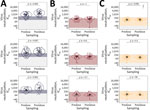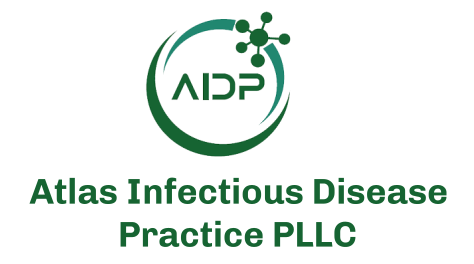Disclaimer: Early release articles are not considered as final versions. Any changes will be reflected in the online version in the month the article is officially released.
Author affiliation: The Francis Crick Institute, London, UK (P. Stevenson-Leggett, L. Adams, D. Greenwood, A. Lofts, S. Gandhi, C. Swanton, S. Gamblin, E.J. Carr, R. Harvey, N.S. Lewis, M.Y. Wu, E.C. Wall); Royal Veterinary College, London (L. Adams, N.S. Lewis); University College London Hospitals National Institute for Health Research Biomedical Research Unit, London (V. Libri, B. Williams, E.C. Wall); University College London, London (V. Libri, B. Williams, S. Gandhi, C. Swanton); University College London Centre for Kidney and Bladder Health, London (E.J. Carr); University College London Division of Infection and Immunity, London (E.C. Wall)
Highly pathogenic avian influenza (HPAI) A(H5N1) clade 2.3.4.4b viruses have been spreading worldwide among wild birds and poultry since 2020 (1). Officials in multiple US states confirmed spillover mammal infections in dairy cattle and detection in commercial milk samples in early 2024, enabled by uninterrupted cattle movement (2). Reports following documented human transmission in 2024 show evidence of H5N1 seroconversion in 7% of sampled dairy workers and that >30% of dairy herds in California are affected (3,4). Cow–human zoonotic transmission causing symptomatic but nonsevere infections have been reported in dairy workers, and 1 case was reported in September 2024 in a hospitalized person without exposure to animals and subsequent mild infection among healthcare workers caring for that patient (https://www.cdc.gov/bird-flu/spotlights/h5n1-response-09272024.html). However, a lack of widespread surveillance in cows and dairy and healthcare workers risks substantial underascertainment of bovine–human transmission events (5), which are further suggested by detection of H5N1 clade 2.3.4.4b viruses in Texas wastewater in March–July 2024 (6). In addition, fomite transmission through commercial milking equipment has been proposed as the primary route of cow–human transmission (N.J. Halwe et al., unpub. data, https://doi.org/10.1101/2024.08.09.607272).
Although pasteurization renders HPAI H5N1 clade 2.3.4.4b viruses nonviable, viable virions have been detected in unpasteurized milk and caused fatal disease in cats that ingested the milk (4,7). Ongoing limited surveillance, detection, and containment of H5N1 clade 2.3.4.4b virus in the United States in both animal and human populations has led to mounting concern that this virus is gaining adaptions that could lead to effective human–human transmission, which could be catastrophic for clinically vulnerable people, particularly those who are immunocompromised and at the extremes of age (2).
Candidate vaccine viruses for pandemic preparedness have been recommended since the reemergence of A/goose/Guangdong/1/1996 lineage influenza A(H5) viruses in 2003. Vaccines against H5 clades, including clade 2.3.4.4b, have been in development, and some countries have small stockpiles. Whether those vaccines protect against severe disease is unknown, and current supplies to combat epidemic or pandemic spread of H5 virus are limited (8).
Adults vaccinated with licensed H5N1 vaccines generate cross-reactive neutralizing antibodies against clade 2.3.4.4b viruses (9), but less is known about cross-protection against H5N1 viruses from quadrivalent influenza vaccines (QIVs). Antigen-specific B-cell monoclonal neutralizing antibodies (nAbs) against H5N1 virus can be found after QIV in humans (10), and studies in ferrets show further nAbs generated by seasonal influenza exposure might offer some protection against HPAI H5 challenge (S. Lakdawala et al., unpub. data, https://doi.org/10.21203/rs.3.rs-4935162/v1); however, QIV vaccination did not protect against H5N1 virus in mice (11). We investigated whether vaccine-induced immunity generated by seasonal QIVs would partially boost cross-reactive immunity against HPAI H5N1 virus in humans.
We compared humoral neutralization of 2 H5N1 viruses, A/dairy_cattle/Texas/24-008749-002/2024 (2.3.4.4b) and A/Cambodia/NPH230776/2023 (2.3.2.1c), in serum samples alongside a seasonal influenza A(H1N1) virus isolate, A/Wisconsin/67/2022, before and after QIV in participants from the University College London Hospitals–Francis Crick Institute Legacy study cohort (https://clinicaltrials.gov/study/NCT04750356) (Appendix Figure). The study included 61 adults (median age 49 [range 38–58] years); 44 (72%) were women, and 17 (28%) were men. Thirty (49%) adults were vaccinated in only the 2021–22 season, but all 61 were vaccinated in >1 study season (2021–22, 2022–23, and 2023–24). Median sampling duration after vaccine dose for 2021–22 was 81 (interquartile range [IQR] 61–81) days, for 2022–23 was 67 (IQR 38–68) days, and for 2023–24 was 77 (IQR 44–77) days. Twenty-seven (44%) participants reported a single underlying condition (Table).
In line with their effectiveness against seasonal influenza, each QIV generated a statistically significant boost in serum neutralization of A/Wisconsin/67/2022 in each season tested (p = 0.003–0.007 by χ2 test) (Figure). In contrast, HPAI H5 virus neutralization in our cohort of healthy adults was blunted or absent. In prevaccine serum samples, we detected neutralization above background against A/Cambodia/NPH230776/2023 in a few samples but did not detect any neutralization against A/dairy_cattle/Texas/24-008749-002/2024 isolate (Figure). No seasonal QIV resulted in a cross-neutralization boost against either HPAI H5 virus (Figure).
Ongoing adaptation of HPAI H5N1 clade 2.3.4.4b virus in cows and other mammal hosts found on dairy farms, including rodents and cats, substantially increases the risk for a major HPAI H5N1 virus epidemic or pandemic in humans (2,4). The paucity of human serologic memory against either H5N1 virus strain raises the potential for widespread vulnerability to infection within the adult population. We observed a predictable boost to neutralizing titers against the contemporary seasonal influenza A(H1N1) virus (A/Wisconsin/67/2022) that was absent for the 2 clinically relevant H5N1 viruses tested in our high-throughput neutralization assay (Appendix). Neutralizing antibody titers have long been used as a correlate of protection against seasonal influenza (12); thus, our observations suggest seasonal QIVs are unlikely to offer adequate serologic protection against H5N1 virus.
Immunity against influenza evolves throughout the lifespan, and early infection exposures influence subsequent antibody responses after infection and vaccination (13). Few participants in our study had detectable neutralizing titers above background to the 2.3.2.1c A/Cambodia/NPH230776/2023 virus and none to the 2.3.4.4b A/dairy_cattle/Texas/24-008749-002/2024 virus. Together with our observed lack of QIV boosting, our results suggest that strategies reliant on existing population-level or QIV-based immunity against H5N1 virus infection must be approached with caution.
One limitation of this study is the lack of in vivo challenge to test for cross-protection. Some studies have reported transient protection against H5N1 challenge after transferring QIV-vaccinated human serum to mice, which was not accurately predicted by in vitro assays, including virus neutralization assays (14,15). Cross-neutralization might also occur in the absence of nAbs, but without in vivo testing, we cannot conclusively determine the extent to which the QIV might provide protection against H5N1 virus. A second limitation is that our cohort, predominately working age, healthy adults receiving occupational QIV, do not represent a population at high risk for severe influenza disease and death. However, they represent an immunocompetent population and would be expected to have the most robust detectable immunity. Third, although we tested 2 H5N1 viruses associated with recent human disease, despite extensive efforts, we could not eliminate background signal in our assay. Thus, we were unable to fully quantify neutralization at lower titers and opted to describe the range within which we detected background signal. As of 2025, no neutralization titers were available from postinfection serum samples in dairy farm workers to further refine that cutoff (6). Further investigation is required to address the issue of background signal. However, other studies suggest nonspecific inhibition by human serum as a possible explanation for low-level readouts for protection (15). Finally, our use of whole virus to assess nAb titers did not allow determination of the extent to which hemagglutinin- or neuraminidase-specific antibodies might have contributed to overall neutralization. However, the high-throughput live-virus neutralization we describe (Appendix) is a highly valuable tool for pandemic preparedness, offering a method for near real-time analysis of serum-based immunity to emerging viruses in large cohorts.
The effectiveness of QIV against influenza A(H5N1) virus remains uncertain, and clarification on the extent of cross-protection in humans is urgently needed. Considering that uncertainty, timely and effective deployment of targeted vaccines would be crucial during widespread influenza A(H5N1) outbreaks. To reduce risks for severe illness and death requires enhanced measures that mitigate the spread of HPAI H5N1 viruses to humans, accelerated pipelines for H5-directed influenza vaccines, and systems that rapidly and equitably reach clinically vulnerable persons worldwide (2).
Dr. Stevenson-Leggett is a specialist COVID Unit postdoctoral researcher at the Francis Crick Institute. Her research interests include high-throughput, live virus neutralization. Mr. Adams is a PhD student within the World Health Organization’s Worldwide Influenza Centre. His research interests include in vitro pathogenicity assessment of influenza viruses, including H5N1 strains.
We thank all the study participants and the staff of the National Institute for Health Research Clinical Research Facility at University College London Hospitals, including Miguel Alvarez and Marivic Ricamara, for participant recruitment and management. We also thank the staff of the Worldwide Influenza Centre, the Scientific Technology Platforms, and the COVID-19 testing pipeline at the Francis Crick Institute for access to the virus isolates used in this study, providing participant sample and data management, and supporting assay development and analysis.
Anonymized data and R code are available at https://github.com/FrancisCrickInstitute/Crick-UCLH-Legacy-live-virus-microneutralization-for-H5N1.
The Legacy study was approved by London Camden and Kings Cross Health Research Authority Research and Ethics committee (reference no. 20/HRA/4717) Integrated Research Application System (IRAS) no. 286469 and sponsored by University College London Hospitals.
This work was undertaken at University College London Hospitals/University College London, which received a proportion of funding from the National Institute for Health Research University College London Hospitals Department of Health’s National Institute for Health Research Biomedical Research Centre. E.C.W., V.L., and B.W. are supported by the Centre’s funding scheme. E.J.C. is supported by a Medical Research Council clinician scientist fellowship.
This work was jointly supported by the National Institute for Health Research that funds the University College London Hospitals Department of Health’s National Institute for Health Research Biomedical Research Centre and core funding from the Francis Crick Institute from Cancer Research UK (grant nos. CC2166, CC1283, CC1114, CC2230, CC2060, and CC2041), the UK Medical Research Council (grant nos. CC2166, CC1283, CC1114, CC2230, CC2060, and CC2041), and the Wellcome Trust (grant nos. CC2166, CC1283, CC1114, CC2230, CC2060, and CC2041). This project was funded in part with federal funds from the National Institute of Allergy and Infectious Diseases, National Institutes of Health, Department of Health and Human Services (contract no. 75N93021C00015). Additional funding for this study was from UKRI (grant nos. MR/W005611/1, MR/Y004205/1, and MR/X006751/1 to E.J.C.). The funders of the study had no role in study design, data collection, data analysis, data interpretation, or writing of the report.
Additional members of the Crick Neutralization Consortium: A. Hobbs, G. Dowgier, R. Penn, T. Sanderson, J. Bazire, A.S. Fowler, M. Miah, C. Smith, M. Miranda, P. Bawumia, N. O’Reilly, S. Warcha, K Ambrose, A. Strange, G. Kelly, and S. Kjar.
Additional members of the Legacy Investigators: P. Papineni, T. Corrah, R. Gilson, R. Beale, and D.L.V. Bauer.







